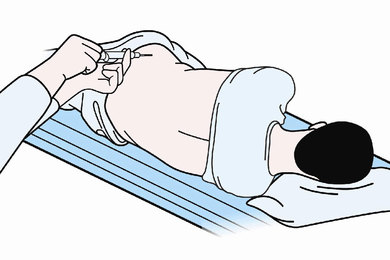|
Dr Newman has been accepted as part of the prestigious team working at the Leaders in Oncology Care (LOC) in 95-97 Harley Street, part of HCA Healthcare. From September 2021, Dr Newman will be able to see patients who have concerns about a possible blood disorder, or who have already been diagnosed and need treatment.
The LOC has world-class facilities for patients needing chemotherapy, blood transfusions or iron infusions, with unrivalled privacy and comfort. Get in touch if you would like to transfer your care to Dr Newman at the LOC, or would like an appointment to investigate your health concerns. For Dr Newman's contact details, please click here. The COVID pandemic has put a strain on society as we know it. Attendances at hospital have been, understandably, lower than expected for the time of year as everyone tries to avoid attending unnecessarily. The result has been a reduction in people attending when they should, and some are coming to harm by not seeking that attention. If you have symptoms or are concerned, please get in touch with your GP or attend hospital - they are still open to patients, and would rather you attend than stay at home and worry.
Blood Specialist is arranging telephone consultations for those not wishing to attend hospital in the first instance, but face-to-face consultations can be arranged where needed, and take place in COVID-safe areas in Dr Newman's network of private hospitals. Don't suffer in silence, get in touch and arrange a telephone consultation now.  For some blood disorders, the only way to be certain of what is going on within the bone marrow is to perform a bone marrow test (sometimes referred to as an aspirate or a trephine). The reason us haematologists are interested in the bone marrow is because this is where the red blood cells, white blood cells and platelets (help you heal if you cut yourself) are made. When there are problems in the blood tests, it can sometimes be an indication that there is a problem with the production of some or all of these cells within the bone marrow. What sort of conditions can be diagnosed with a bone marrow test? The majority of all blood cancers can be diagnosed using bone marrow test, including acute myeloid leukaemia, chronic myeloid leukaemia, acute lymphoblastic leukaemia, chronic lymphocytic leukaemia, myeloma, myelodysplastic syndrome, myeloproliferative disorders, aplastic anaemia, and a number of rarer problems. The test is sometimes used to 'stage' a condition, such as lymphoma, once the diagnosis has been made, in order to see how widespread the problem has become. The bone marrow test can also be useful in diagnosing non-cancerous conditions of the bone marrow. What is involved in the test? It is a relatively simple procedure and patients tell me that the thought of the procedure is often worse than the reality. The procedure is generally performed with local anaesthetic to numb the area over the back of the hips on one side, with the patient lying on the opposite side (see picture). Depending on the information being sought, the person doing the procedure will use either one or two needles: the first to take some liquid out of the bone marrow ("aspirate") and the second to take a core of the bone ("biopsy"). The tough part of the bone is the outer layer, once through that layer, it is like a honeycomb with gaps for blood cells to be made. It is therefore not usually very difficult to take samples. What happens after the test? The test itself only takes about 5-10 minutes to perform, but afterwards you will be asked to lie on your back for up to 30 minutes to help settle any bleeding that may occur. Once you have been checked by the nurse, you can leave and go about your daily activities (although the plaster will need to be kept dry for 48 hours). However, some people take it easy for the rest of the day, and once the local anaesthetic has worn off, it is usually safe to take paracetamol to ease any discomfort that might be felt. The test results can take anything from a couple of days up to a few weeks to be processed, depending upon which tests are being requested. Sometimes the diagnosis can be gained on the results that come back early, but sometimes they can't, and the full three week wait is required to get the answer. What are the potential problems from having the test? Like a simple blood test, whenever you pass a needle through the skin there is a the potential for bleeding to occur, but this will have stopped before you are allowed to leave the hospital. Please let your doctor know if you are taking any medicine that make you bleed more, as these sometimes need to be stopped in advance. Other problems include bruising and infection, although these are uncommon. If you notice any redness around the injection site that increases in size, let your doctor know immediately, and antibiotics can be given. The test can be uncomfortable, but is rarely very painful - but for some people this can occur, and they may require sedation or in extreme cases a full anaesthetic. Sometimes, despite the test being performed appropriately, insufficient quality samples can be obtained, and that can mean the test needs repeating at a different point in time. |
AuthorDr Newman is a Consultant Haematologist practising in London and the South East Archives |


 RSS Feed
RSS Feed